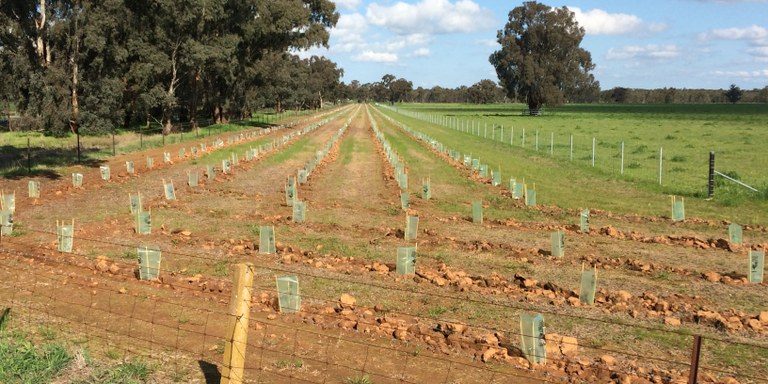Junee Landcare members and surrounding farmers were keen to address the past removal of vegetation on farmland through the planting of native shrubs and trees to improve habitat and connectivity, and support regenerative farming practices. However, conditions presented a big challenge for the project, from drought to bushfires to Covid-19. The drought caused planting to be delayed for a year, and conditions were still not perfect when planting did take place.
This bring us to Covid-19 and the safety restrictions regarding group gatherings. We had to make some changes and reduce our contact and that meant our group planting activities had to be cancelled, and school engagements modified.
While we were unable to change the environmental conditions, we did use the time to research the “ideal” shelter belt length, continuity and location, and its interaction with farm practices like cropping. Our next step was to explore native vegetation that would survive drier conditions. When we finally got a substantial amount of rain, we got our initial planting plan back on track. We finally made progress and had 3,500 trees in the ground in 2020. By the time we reached our third and final stage we had seven establishing shelter belts throughout the Junee region.
We then adapted to Covid-19 health restrictions, and replaced our planned activity days with the creation of information sheets and school information packages. We also worked with landholders to educate them on monitoring and long-term management of their sites.







